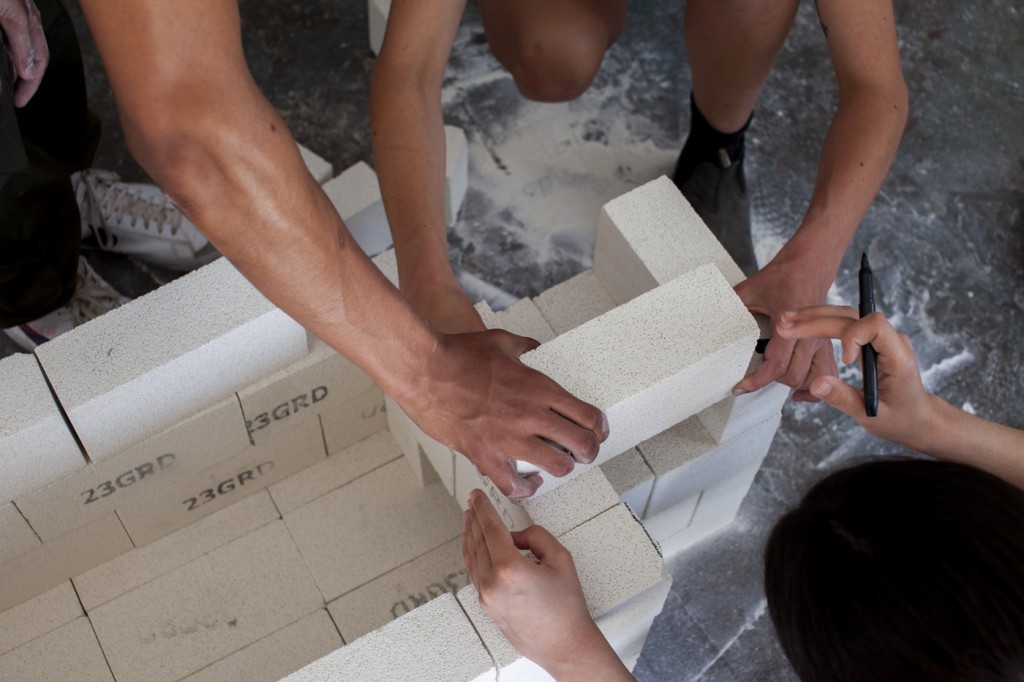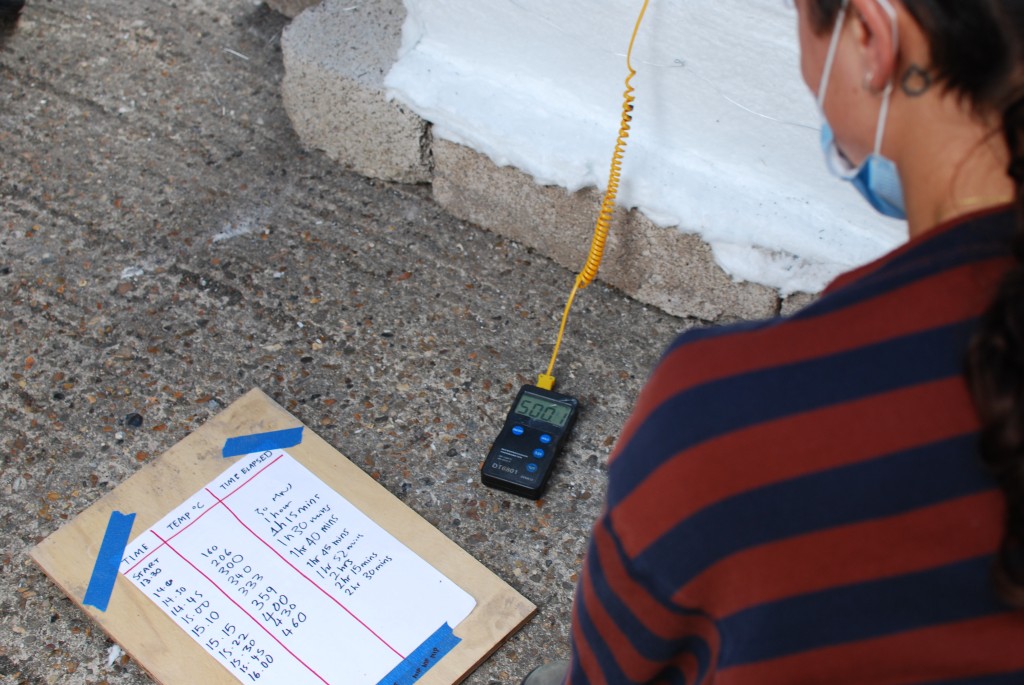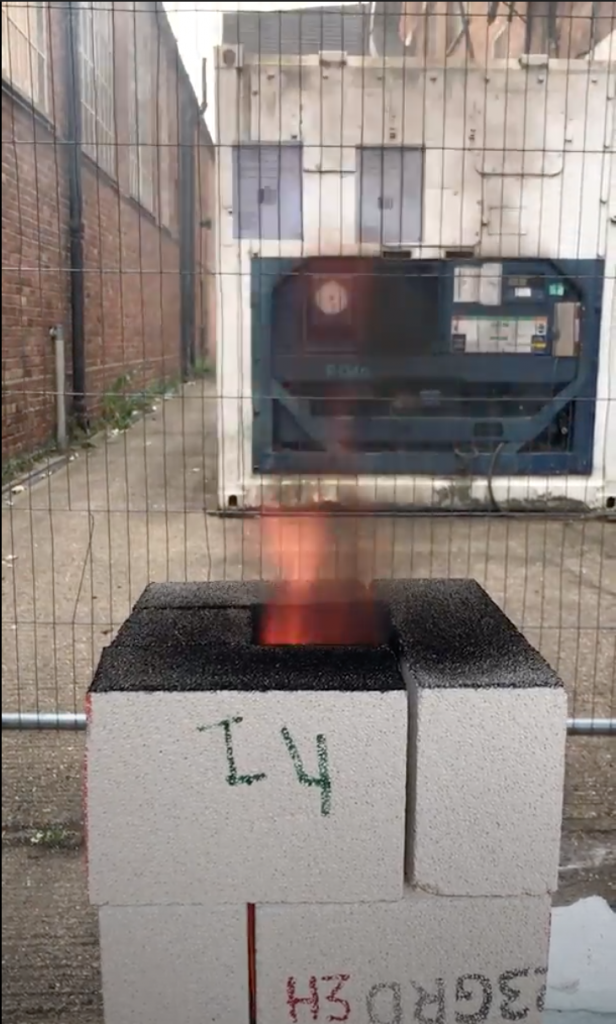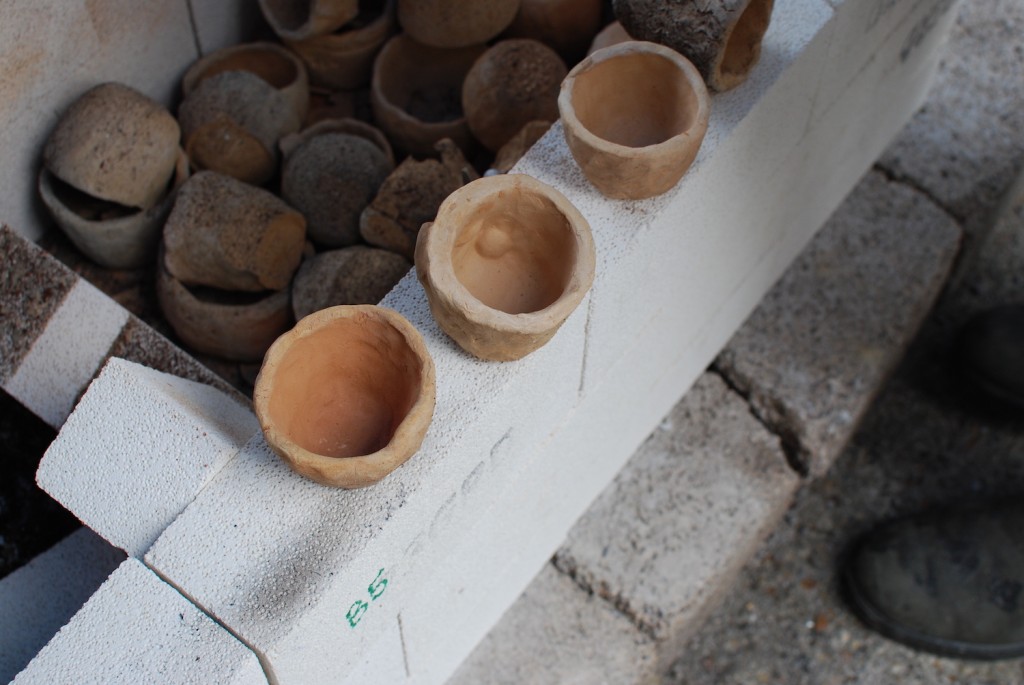
The aim of Absolute Beginners is to help young people learn how to produce basic goods in radically sustainable ways. And as basic goods go, this as simple as it gets – something to drink with.
Pottery is one of the oldest human inventions, with clay cups having been around since 18,000 BCE.

↑A Roman clay cup, c.2nd century CE.

↑A Cadbury's Crunchie mug, c. some point in the 1990s.
It’s also the most local of the products we made, as the material came from the ground beneath Park Royal itself – London Clay. Park Royal used to have many different clay pits and brick works, where London Clay was dug, worked and used in the same place.
(In truth our clay is from a little further away – it’s from the tunnels being dug for HS2 in the area – but the idea is the same.)

↑London Clay freshly dug from an HS2 site in Hillingdon. We weren't allowed to help dig the clay and had to sit in a portacabin while the job was done.
The workshops were led by the amazing Cam Biddell. The Beginners were Emmanuel, Herbie, Kairie, Nafisa and Zala.
Cam began by showing our Beginners how to process the raw clay into something usable. We’d had it soaking in buckets for a few days, in which time it had gone soft and squidgy. Cam showed us how to push this stuff through a sieve, to get pure liquid clay out of the other side.

↑Raw clay in buckets. Empty tahini and mayonnaise buckets are another abundant resource in the Park Royal area.

↑The clay being pushed through sieves.

↑One of our Beginners during the squidging process.
This liquid clay is then poured onto plaster bats. This bit was pretty dramatic (and messy). It’s then left to dry for 3 or 4 days.

↑The pure liquid clay being poured onto plaster bats.

↑A battle-damaged Absolute Beginners apron. We never were able to get this handprint out.
We started the next session with the clay looking like this:

↑Processed clay, ready to work.
Cam showed the youth how to ‘wedge’ the clay – kneading it to get rid of any air bubbles – and then form it into simple pinch pots, with the finger and thumb. An idea and a technology going back thousands of years. No potter’s wheels please, we’re low tech.
(It took a while to get this. Everyone went at a different pace. Cam Jarvis, who was leading on working with and taking care of the youth, kept reminding everyone: it’s not a test, it doesn’t have to be perfect.)

↑Cam Biddell shows the beginners how to 'wedge' the clay to get the air bubbles out.

↑The beginners get wedging.

↑A pot-sized amount of clay.

↑Production of the clay cups in progress.

↑How you make a pinch pot.
We experimented with different ways of decorating the cups (Herbie added a face to his), and different sizes.

↑Herbie's Face Cup, and the Giant Cereal Bowl.

↑Experimenting with decoration.
After considering the giant cereal bowl option, the young people settled on two products: small and medium, both undecorated.

↑The final templates for our cups - medium and small.
In the third workshop, we built a wood-fired brick kiln in the studio. This was something Cam herself had never done before, and the plan we were working from was pretty vague.
The young people were amazing – improvising, suggesting, marking, sawing and problem solving as we went along.

↑Our Beginners work out how to build the kiln.

↑There's a lot of trial and error.

↑Co-operation is the key.

↑The kiln is nearly finished.
As with all of our products, the aim is to keep it as low-tech as possible. The kiln is made of bricks. The fuel is wooden off-cuts sourced from the streets. The bricks were special kiln bricks – as light as a feather. Would it work with with common or garden house bricks? Possibly.
(It would have been easier to use an electric kiln of course – there are plenty of kilns in Park Royal’s art studios – but the whole point is to do it in a way that might be possible in a local, low-tech, non-global economy. Where would you get the parts for an electric kiln if it breaks in this future? Amazon?)
Once we’d finished, it was time to get on the production line. And we had to brand them too.

↑Everyone gets busy producing as many cups as possible.

↑The cups dry out, ready to go into the kiln. Possibly one of our favourite pictures from the whole workshop.

↑A to B scratched in to a cup.
For the final workshop, it was time to fire it. The good people at Queensrollahouse let us re-build the final thing in the alleyway next to their building (the risk assessment was off the charts).

↑The beginners build the kiln in an alleyway, inside a heras fence cage.

↑We rebuild it according to the numbers the young people wrote on each brick. Not just hat racks.
We stacked the cups inside, and put the roof on.

↑The cups in the kiln, before the lid is closed.

↑Post-industrial kiln, Ready 2 Fire.
And then we lit it.

↑One of our beginners lights the kiln.

↑Factories can be fun.

↑The fire begins.
We fired it over an entire day, trying to get to the mythical 1000 degrees celsius which would fire the cups, and make them hold water. We used an electric fan to increase air-flow, to get it hotter (hence only 99% off-grid) – but only after we’d destroyed a pair of bellows and used a lot of muscle power first.

↑Cam Biddell keeps a close eye on the thermometer.
By the end, flames were shooting out of the chimney and the thermometer gave up the ghost, somewhere around 900 degrees. It was dramatic.

↑Around 600 degrees.

↑Around 800 degrees.

↑No idea how how it is here, as the thermometer packed in around 900 degrees.
We left the kiln to cool overnight. The next day, we opened it. We lost half the cups in the firing. These are the ones that made it.

↑The next morning, the kiln is opened.

↑The young people handle the cups they've made.

↑The good ones are stacked on a wall.

↑Quality control. We sort the good from the broken and chipped.
Strange, rough, peachy-pink pots, ancient looking, out-of-time. They hold water, but aren’t ‘vitrified’ – we’d need an electric kiln for that, to get to higher temperatures – so over time the water will seep through.

↑Cam shows the young people that the cups hold water.
These Bronze Age pots are as good as it gets with off-grid technology. We managed 40 in the end over two firings. True, they’re hardly a replacement for the £2 Ikea Mug. But they do hold water – and they’re extremely beautiful.
The Beginners have made drinking cups, using simple tools and off-grid power, from the clay in the ground beneath their feet.

↑One perfect Beginners Cup.
BEGINNERS CUPS are
→ 100% LOCALLY SOURCED
→ 100% HANDMADE
→ 99% OFF-GRID
Use for: chai tea, very-high-end disposable cups, emergency beakers, or pen pots.
BEGINNERS CUPS were named by Kairie Woodstock-Case.
CREDITS:
Workshop Leader → Camille Biddell.
Absolute Beginners → Emmanuel, Herbie, Kairie, Nafisa and Zala.
Youth Engagement → Cam Jarvis.
Date → July 2021